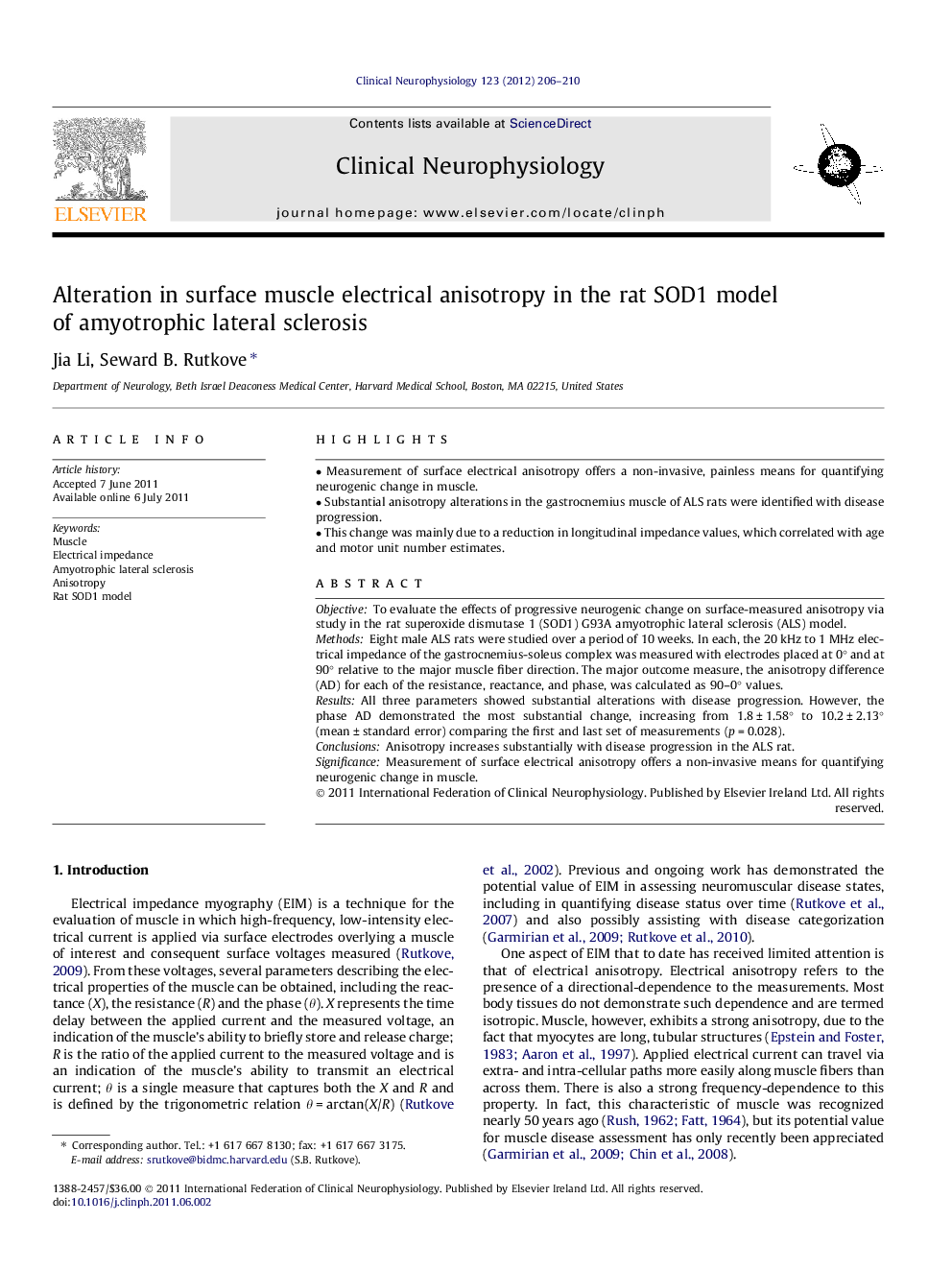| Article ID | Journal | Published Year | Pages | File Type |
|---|---|---|---|---|
| 3043849 | Clinical Neurophysiology | 2012 | 5 Pages |
ObjectiveTo evaluate the effects of progressive neurogenic change on surface-measured anisotropy via study in the rat superoxide dismutase 1 (SOD1) G93A amyotrophic lateral sclerosis (ALS) model.MethodsEight male ALS rats were studied over a period of 10 weeks. In each, the 20 kHz to 1 MHz electrical impedance of the gastrocnemius-soleus complex was measured with electrodes placed at 0° and at 90° relative to the major muscle fiber direction. The major outcome measure, the anisotropy difference (AD) for each of the resistance, reactance, and phase, was calculated as 90–0° values.ResultsAll three parameters showed substantial alterations with disease progression. However, the phase AD demonstrated the most substantial change, increasing from 1.8 ± 1.58° to 10.2 ± 2.13° (mean ± standard error) comparing the first and last set of measurements (p = 0.028).ConclusionsAnisotropy increases substantially with disease progression in the ALS rat.SignificanceMeasurement of surface electrical anisotropy offers a non-invasive means for quantifying neurogenic change in muscle.
► Measurement of surface electrical anisotropy offers a non-invasive, painless means for quantifying neurogenic change in muscle. ► Substantial anisotropy alterations in the gastrocnemius muscle of ALS rats were identified with disease progression. ► This change was mainly due to a reduction in longitudinal impedance values, which correlated with age and motor unit number estimates.
